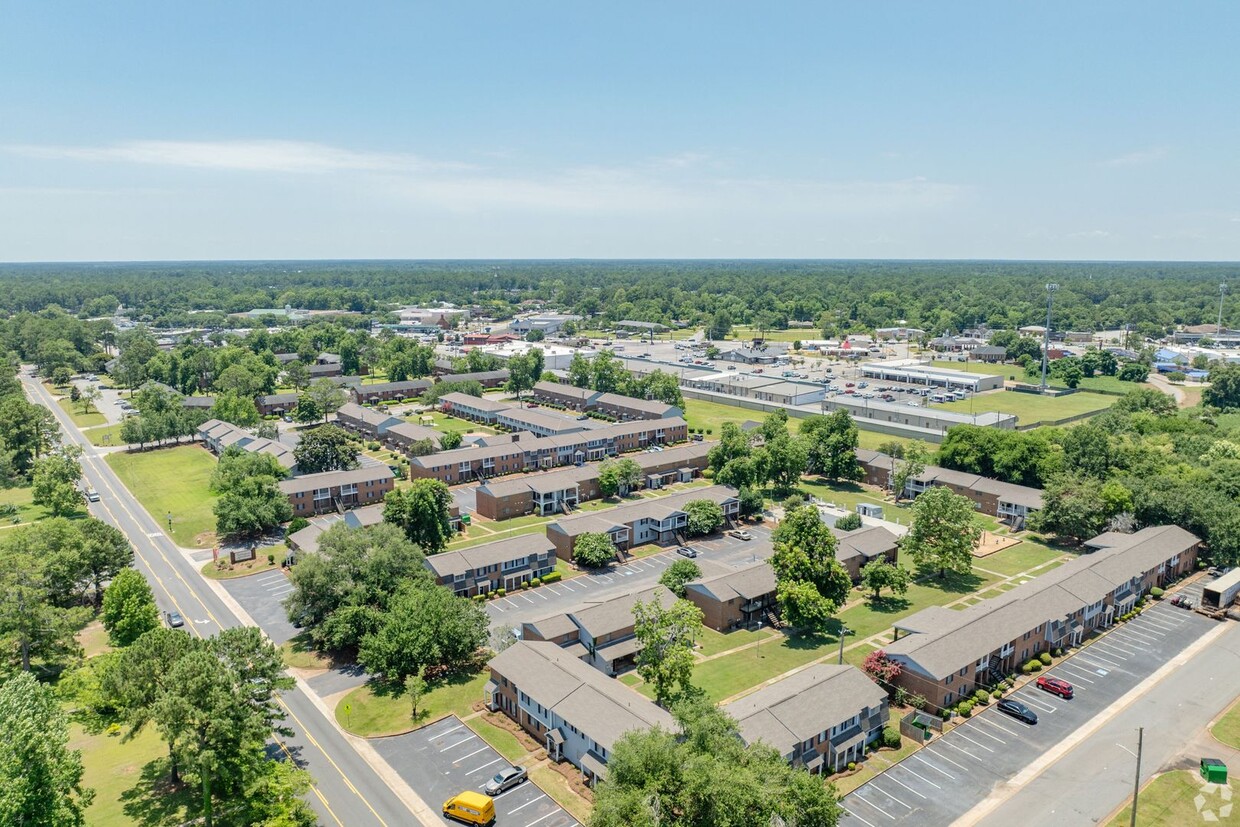Multifamily Investing: How Can You Do it in 2024 – Part 2 Advantages of Investing in Multifamily Properties
Advantages of Investing in Multifamily Properties
Multi family properties, which range from duplexes to large apartment complexes, are a cornerstone of real estate investment for those looking to diversify their portfolios. These properties are more than just residential spaces; they are revenue-generating assets that can offer a more stable investment compared to the fluctuating stock market.
Why Multi family?
For accredited investors—those with an annual income exceeding $200K or a net worth over $1M excluding their primary residence multifamily investments present several distinct advantages:
- Stable Cash Flow: The ability to generate consistent rental income from multiple tenants is a key attraction. For example, a property that adheres to the 1% rule, where the monthly rent is at least 1% of the purchase price, can provide a reliable return on investment. This rule is a quick way to measure the potential profitability of a rental property and is particularly relevant in markets with strong rental demand.
- Scalability: Multifamily properties allow investors to grow their real estate portfolio more rapidly than acquiring single-family homes individually. This scalability is beneficial for investors looking to expand their holdings efficiently.
- Risk Distribution: The risk of income loss is mitigated by having multiple tenants. Even if one unit is vacant, the others can continue to generate income, which can help maintain profitability during tenant turnover periods.
- Tax Benefits: Real estate offers tax deductions such as mortgage interest, property taxes, and depreciation. These benefits are amplified in multifamily properties due to their size and income potential. For instance, cost segregation studies can accelerate depreciation on certain components of the property, enhancing the tax benefits.
Multifamily real estate is one of the most essential real estate classes and is continuing to experience lower vacancy rates every year. Among all commercial real estate asset classes, multifamily provides the most essential function – no matter what else happens in a local market or the economy writ large, people will always need a place to live.
Is Multifamily Investing a Good Idea in 2024?
In 2024 and the years ahead, we believe that macroeconomic factors favor multifamily investing. Here are some trends that currently favor multifamily investing:
- Homeownership has never been more expensive. With single-family homes in short supply and more costly than at any point in history, upward demand pressure is put on multifamily. With economists predicting rates to stay above 6% in the near term, it’s easy to see why many potential homebuyers are holding onto their apartment leases. Although a recent report from Marcus & Millichap notes that supply pressure for multifamily has been increasing as of late, both elevated mortgage rates and stubbornly high sale prices will increase the overall rental pool, and new multifamily units will take some time to be absorbed into the rental market.
- The U.S. generally faces a significant housing unit shortfall, with robust new “household formation” expected. With job figures also remaining strong, demand for multifamily units should remain elevated relative to supply for the foreseeable future.
- While inflation has moderated, economists agree that we can expect it to stick around for some time. Given the inflation-hedging properties of multifamily, this trend also favors multifamily investing relative to other asset classes.
The multifamily construction pipeline was strong up until recently, but the surge in interest rates has changed the equation. The Census Bureau expects multifamily starts to be down meaningfully year-over-year, with the supply pipeline thinning in the years ahead. This means that multifamily investing is potentially a way to “do well by doing good,” helping to mitigate the massive shortfall of market-rate housing in the U.S. Workforce housing investments are needed, but any investment in density housing can potentially be considered a social impact investment.
The Supply Picture
Among other things, an investment opportunity is dependent on market fundamentals: supply and demand. Less supply means less competition, and hence less supply of multifamily units coming to market is a boon for multifamily investors. This may well be the case for the foreseeable future. April 2024 saw the fewest new multifamily project starts since April 2020, when the COVID-19 pandemic halted construction in many markets. This is mostly a function of capital markets conditions rather than a response to decreased demand. With higher interest rates and many mid-sized banks tightening balance sheets, the financing picture has grown more complicated for developers and operators. Those that can make projects pencil may face less competition, and hence more compelling investment prospects.
Multifamily provides consistent cashflow
As of this writing, inflation is at a 40-year high. This may sound concerning, but what does it actually mean for multifamily real estate investing? While office, industrial and retail properties typically have only one or a small handful of tenants locked into long-term leases, multifamily properties often have dozens or even hundreds of individual rental agreements (1 for every unit) averaging 1-year in term, with tenants turning over on a rolling basis. This arrangement provides downside-protection by minimizing vacancy exposure during economic downturns. On the other hand, consistent turnover of leases in a multifamily property allows management to gradually ratchet up average rents in accordance with prevailing market rates and commensurate with the rate of inflation.
Multifamily real estate investing brings inherent advantages. But, there are a number of different strategies multifamily investors can employ to further diversify, such as targeting positions across the capital stack, and investing across strategies (such as value-add or core plus).
Multifamily exhibits low volatility
Peter Linneman, the principal of Linneman Associates, as well as the CEO and founder of American Land Fund and former professor at Wharton School at the University of Pennsylvania, recently described multifamily as a relatively safe investment. According to Linneman, multifamily has one truly unique advantage over other asset classes: the protection of Fannie Mae and Freddie Mac financing, which is predictable and readily available to borrowers large and small.
For context, federal agencies and government-sponsored entities hold roughly 50% of the total multifamily debt outstanding as of Q2 2022. It’s also worth noting that since housing is an essential function, multifamily tends to be less impacted by fluctuations or structural shifts in the economy. As a corollary, we could say that multifamily should be more resilient through market cycles. This holds true empirically: multifamily has yielded the best risk-adjusted returns since the inception of the NCREIF Property Index (NPI) in 1988.
How Multifamily Investments Can Qualify for Unique Tax Deductions
Commercial multifamily units that contain over five units often qualify for unique tax deductions that can include:
- Maintenance
- Management
- Marketing fees
- Insurance premiums
- Repair costs
- Utility bills
Any fees associated with attracting new tenants and keeping your investment healthy, which you can then write off as marketing and maintenance costs. Investing passively in multifamily generally allows for “pass-through” tax benefits; in other words, you can leverage the same tax benefits as the sponsor.
There are two main ways to invest in multifamily properties – acquiring existing assets and then adding value, or pursuing new ground-up development projects. Each method carries different levels of risk and potential returns.
- Value-Add Acquisitions: This involves purchasing an existing multifamily property, operating it, and eventually selling it. The specifics of this strategy can vary widely, ranging from simply maintaining a relatively new property to maximize cash flow, to extensively renovating and repositioning an older asset. Regardless of the approach, most acquisition strategies aim to increase the property’s net operating income during the holding period to potentially enhance its value for an eventual sale.
- Ground-Up Development: This strategy is opportunistic, focusing on constructing new multifamily projects from the ground up, and typically has long-dated projected hold periods. A common approach is to build the property, lease it up to stabilized occupancy levels, and then sell it shortly after — typically within a three-year timeframe. This is often referred to as a “merchant build” in the industry. The primary goal of ground-up developments is to maximize the potential returns and equity multiples for the investment partners
“Multi family” is often used as shorthand for “apartment properties.” While apartments may make up the bulk of multifamily investment assets, there are other forms of multifamily, or “sub asset classes.”
All types of multi family properties benefit from the same underlying dynamics: a tangible asset with an essential use and the ability to deliver cash flow and hedge against inflation. However, various types of multifamily strategy may entail different risk/return profiles and considerations. Smaller multifamily properties like duplexes, triplexes and quadruplexes might have less maintenance costs but are generally smaller in total capitalization, and so do not have the same potential for scale and achieving total return.
The investment strategy or type of business plan is also a critical component of multifamily investing. A core or core-plus investment will entail less risk and less total return potential. However, core and core-plus assets typically have more stable occupancy, and so may provide more reliable cash flow. Other, more opportunistic value-add real estate investments (as well as ground-up development projects) tend to carry higher risk and thus have higher total return potential. Be sure to understand the business plan as you consider multifamily investing.
Here are a few of the property subtypes that are often grouped into the broader multifamily asset class:
Apartment Buildings
Apartment complexes are the most common type of multifamily property on the market, with nearly 22 million units across the country. Construction pipelines are expected to thin considerably, however, as the effects of higher interest rates make it more challenging for operators to finance new projects. Unlike small multifamily units, large complexes require involved property management teams and routine maintenance. Tenant turnover is typically high, however, so rent prices can quickly be adjusted to reflect current market values.
What Commercial Multifamily Investors Should Know
Apartment buildings are one of the most common types of multifamily real estate, with nearly 22 million units in the United States alone.
Duplexes, Triplexes and Quadruplexes
Duplexes refer to two individual units that occupy the same building. Oftentimes a wall is shared between the two units and both rentals are identical. Triplexes and quadruplexes are built with the same configuration in mind – three or four units are all housed within one complex. Since these configurations house a small number of units, they’re potentially a good fit for newer investors. Fewer units usually mean fewer maintenance and management responsibilities, making duplexes, triplexes, and quadruplexes a great portfolio add for experienced investors as well.
Townhomes
Townhomes are popular property rentals for those who desire affordable privacy within a gateway market. Although most townhomes share a wall with other units, they’re generally more spacious and can come with amenities like garages and private yards. The private outdoor spaces associated with townhomes have awarded them the name “garden apartment.” Townhomes can also be great properties to hold and sell for a profit, particularly for investors who aren’t keen on renting out their real estate investments.
Condo Complexes
Condos are attractive investment opportunities for those who want a low amount of maintenance responsibility. Most homeowners association (HOA) costs will take care of maintenance and management fees.
This type of multifamily unit is a great investment choice for desirable markets like tourist destinations or popular cities. It’s possible to own one condo unit within the complex or invest in entire condominium complexes.
Student Housing
Student housing is such an appealing strategy that it is often considered to be its own asset class. In addition to the usual benefits of multifamily investing, student housing assets offer addition recession hedging: while a tenant base for an apartment building may fluctuate based on macroeconomic factors, demand for student housing usually does not. If anything, downturns put upward demand pressure on post-high school education, and hence on student housing.
What Are the Different Classes for Multifamily Investments? Multifamily properties are graded in three main classes – A, B, and C based on factors such as age, quality, amenities, rent levels, and location.
- Class A multifamily properties, especially in suburban areas, are considered top-tier and offer resort-like amenities such as pools, recreation areas, and fitness centers. These properties command the highest rents in their respective markets.
- Class B multifamily properties are a step below Class A in terms of building quality, location desirability, and amenities offered. They are often referred to as “workforce housing,” since they cater to median-income earners through relatively affordable rents.
- Class C multifamily properties are the lowest tier, consisting of older buildings that may have functional issues, outdated designs or systems, and require maintenance or renovations. These properties offer the most economical rental rates but lack modern amenities and features.
Like any real estate investment, successful multifamily investing requires careful underwriting and a detailed understanding of the market. Consider the following tips while considering multifamily investing opportunities.
- Understand the local market. Take a look at rental and sales comps in the local market. If you are investing through a platform these comps and research should be readily accessible.
- Understand the business plan. How much risk is the sponsor taking on (and, therefore, would you be exposed to as an LP investor). What is the extent of capital improvements that must be made? What is the current occupancy level and where does it need to be in order to hit modeled returns? What leverage is being used? Be sure to get a sense of the risk factors and a feel for whether projected returns are appropriate given risk factors.
- Understand the structure. The real estate capital stack can be complex, especially for multifamily assets with a higher number of units. Be sure to understand where you fit in and what contractual rights you have as an investor, including what the promote structure is and whether cash flow is guaranteed or at the discretion of the sponsor.
- Diversify above all else. No matter your objectives or risk tolerance, a diversified approach is recommended. You can invest fractionally and passively, at relatively low minimums. This streamlined investing experience can facilitate diversification.
In Part 3 We’ll discuss – How to Evaluate Multifamily Real Estate Markets
Successful real estate investors focus on finding the deal because it’s the biggest problem new investors face, the best protection strategy, the lowest common denominator for any exit strategy, and the trigger point that makes everything else easier. The Bottom Line – Investing in Affordable Housing or a Multi-Family Portfolio, it can be very tricky. Why try to go it alone. Are you interested in having a professional / responsible group handle your investments ? Then don’t venture down this road alone, let SIMM Capital guide you in the right direction. We live it and breath the industry – at SIMM Capital our strategy is to give everyone the chance to build wealth through real estate. We seek the best assets that hold the largest opportunities while delivering in rent growth year over year. We know the business. To see how we can help you with your Real Estate investments talk to an expert and click the link www.simminc.com




Recent comments